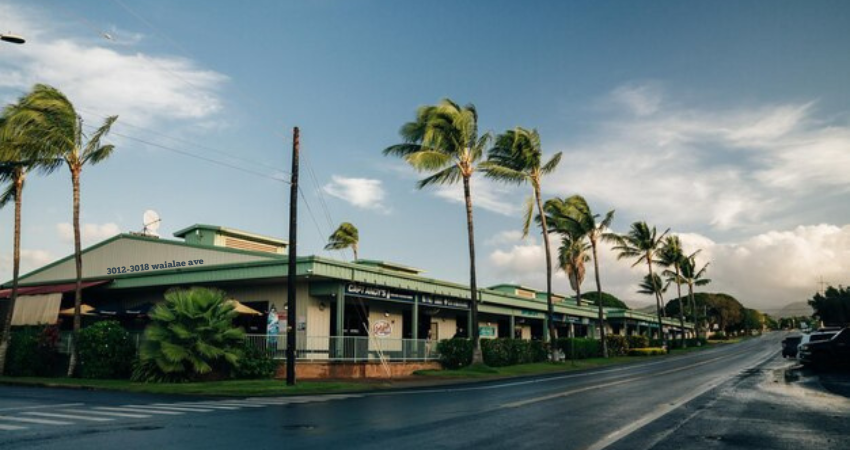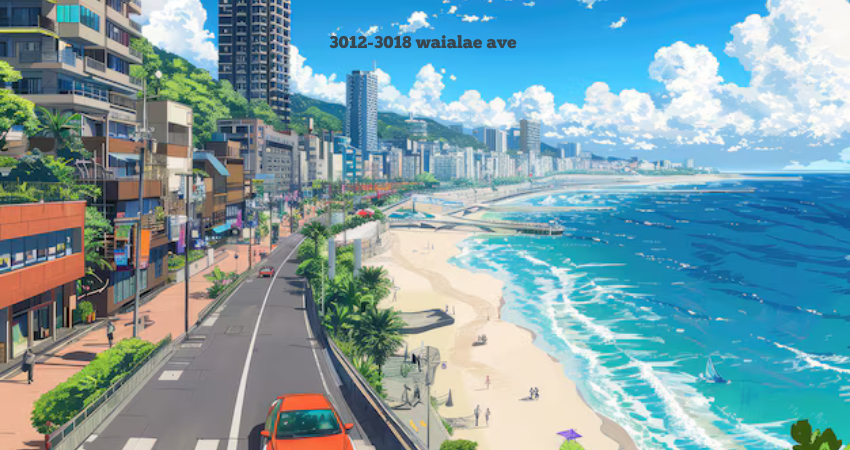Nestled in the heart of Honolulu, Hawaii, along the storied stretch of 3012-3018 waialae ave, lies a cluster of addresses—3012 through 3018—that have quietly witnessed the ebb and flow of life for generations. These numbers, etched into history, represent more than just a collection of buildings. They are keepers of tales, whispers of a bygone era, and harbingers of dreams that have both risen and fallen like waves on the nearby shores. This is their story—a story told not in cold statistics, but in the warm, resonant tones of lives lived, loves cherished, and legacies born.
The Early Foundations: Waialae Avenue in the Late 19th Century
Before these addresses came into existence, 3012-3018 waialae ave was little more than a dirt path winding through the lush, untamed beauty of Oʻahu. The land, bathed in the golden glow of the Hawaiian sun, was a canvas of taro fields, coconut groves, and the shimmering blues of the Pacific in the distance. It was a time when the land belonged to the Kingdom of Hawaii, ruled by monarchs whose wisdom and aloha spirit imbued the island with its unique rhythm.
By the late 1800s, however, the winds of change began to stir. Western influence had begun reshaping the island’s destiny, and with the annexation of Hawaii by the United States in 1898, Honolulu embarked on a transformation. Waialae Avenue, once a quiet rural road, became a vital artery connecting the burgeoning communities of Kaimuki and Kahala.

The Birth of 3012–3018 Waialae Avenue: Early 20th Century
It was in the early 20th century, during Honolulu’s rapid urbanization, that the addresses 3012 through 3018 were born. In those days, the avenue was lined with wooden storefronts, modest homes, and dusty sidewalks. The buildings that would come to occupy these addresses were initially modest—simple structures that reflected the industrious spirit of their occupants.
The 1920s marked a golden age for Waialae Avenue, as the growth of the Kaimuki neighborhood brought an influx of residents and businesses. The buildings at 3012–3018 were soon bustling hubs of commerce and community. A bakery, a barber shop, and a family-run general store occupied the spaces, their owners pouring their hearts into their trade. The scent of freshly baked bread mingled with the salty sea breeze, while the cheerful buzz of conversation filled the air.
The War Years: Shadows and Resilience
The 1940s brought with them the dark clouds of World War II. Honolulu, with its strategic location, became a hub of military activity, and the lives of those along Waialae Avenue were forever changed. The buildings at 3012–3018 bore silent witness to these turbulent times. Soldiers, dressed in crisp uniforms, frequented the shops, while residents gathered around radios to listen to news from the frontlines.
During this time, the buildings became more than just commercial spaces—they became sanctuaries. Families and neighbors leaned on one another, finding solace and strength in their shared struggles. The businesses, though strained by wartime shortages, persisted, embodying the resilience and aloha spirit that defines Hawaii to this day.
Post-War Prosperity: A Flourishing Community
As the war ended and peace returned to the islands, the 1950s and 60s heralded a period of growth and prosperity. Honolulu blossomed into a modern city, and Waialae Avenue evolved into a vibrant thoroughfare lined with shops, cafes, and cultural landmarks. The buildings at 3012–3018 transformed to reflect the changing times.
By now, these addresses had become home to a mix of family-owned businesses and community gathering spaces. A mom-and-pop diner served hearty plate lunches to locals and tourists alike, while a secondhand bookstore at 3014 became a treasure trove for dreamers and wanderers. Each storefront had its own story, its own heartbeat, and together, they wove a tapestry of human connection.
The Cultural Renaissance of the 1970s and 80s
The 1970s brought a cultural renaissance to Waialae Avenue. As Hawaii embraced its unique identity, the area became a hub for artists, musicians, and visionaries. The buildings at 3012–3018 played host to this creative wave. A small gallery opened its doors, showcasing the works of local painters and sculptors, while a music shop became a gathering place for aspiring performers.
This was a time of experimentation and expression, and the walls of these buildings seemed to hum with the energy of new beginnings. Late into the night, the strum of ukuleles and the laughter of friends spilled out onto the avenue, creating memories that lingered long after the last notes had faded.
Challenges and Change: The 1990s and Beyond
As the 20th century gave way to the 21st, Waialae Avenue faced new challenges. The rise of big-box retailers and online shopping brought competition to the small businesses that had long defined the area. The buildings at 3012–3018 were not immune to these pressures. Some storefronts closed their doors, their windows darkened, and their signs faded with time.
Yet, even in the face of adversity, these addresses refused to be forgotten. They became a canvas for reinvention, as entrepreneurs with bold visions breathed new life into the spaces. Cafes serving locally sourced coffee, boutique shops celebrating Hawaiian craftsmanship, and coworking spaces fostering innovation took root. The past and the present coexisted, each honoring the other in a delicate dance.

A Living Legacy: The Spirit of 3012–3018 Waialae Avenue
Today, 3012–3018 Waialae Avenue stands as a testament to the enduring spirit of Honolulu. These buildings are more than just bricks and mortar—they are living, breathing entities that carry the stories of countless individuals. They remind us that history is not a static record but a vibrant, ever-evolving narrative.
Walk along Waialae Avenue, and you will see the echoes of the past mingling with the promise of the future. The sun-kissed facades of these addresses, adorned with colorful murals and thriving greenery, invite you to pause and reflect. Step inside, and you will find the warmth of aloha in every smile, every handshake, every shared moment.
Conclusion: A Story Still Being Written
The history of 3012-3018 waialae ave is a story of resilience, reinvention, and community—a story that continues to unfold with each passing day. It is a reminder that places, like people, are shaped by the lives they touch and the memories they hold.
As we stand at the crossroads of history and progress, let us honor the legacy of these humble addresses and the countless souls who have called them home. Let us carry forward the lessons they teach us: that every corner of the world, no matter how small, holds the power to inspire, to connect, and to endure.


